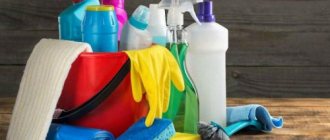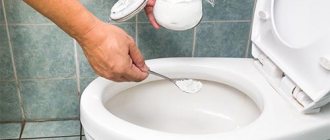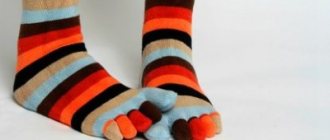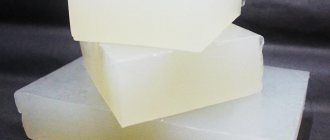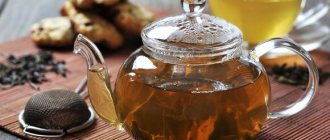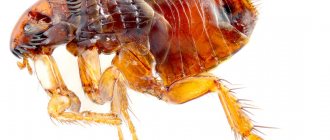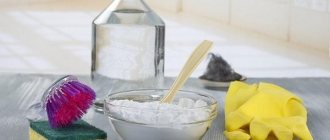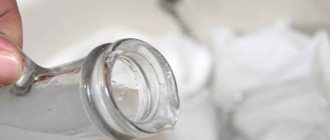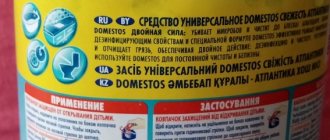Dry bleach (“bleach”) is a disinfectant that has proven its effectiveness over decades of use and has no more effective analogues. It consists of calcium hydroxide (slaked lime), hypochlorites, chlorides, chlorates and calcium carbonates, containing 20-25% of the active substance. Available in the form of a white or lightly colored powdery mass.
The popularity of this material is largely due to the fact that only chlorine is capable of destroying some viruses and bacteria: the causative agents of HIV infection, hepatitis, tuberculosis and other dangerous diseases.
Chloride of lime for disinfection is used both in dry and diluted with water form. It should be borne in mind that chlorine is active only in a humid environment, so bleach (powder) must be used on pre-moistened surfaces. For maximum effect, a mixture called “master batch” is prepared, as well as its varieties.
Chlorine-containing disinfectants
For disinfection, use bleach (bleach) or products containing 1–30% active chlorine. They smell unpleasant, but quickly destroy the membranes of bacteria, yeast, mold, spores, and all types of viruses.
For disinfection, chlorine is produced:
- tablets - “Aquatabs” (3600 rubles for 60 pcs.), “Oka-Tab” (500 rubles for 300 pcs.) and others;
- granules - “Glavchlor” (700 rubles per 1 kg), “Septochloral” (750 rubles per 1 kg), others;
- powders - “Lumax” (600 rubles per 1 kg), “Tepsichlor” (1000 rubles per 2 kg), “Chloramine” (150 rubles per 300 g), others;
- solutions - “Belizna” (50 rubles per 1 l), “Hypostabil” (600 rubles per 5 l), “Domestos” (100 rubles per 1 l), others;
- gels - Sanfor Universal (100 rubles per 1 l), “Whiteness” (100 rubles per 1 l), others.
Bleach powder for disinfection consists of chloride, hypochlorite, calcium hydroxide. The formula is written as 3Ca(OH)2 × 2Cl2.
The product is caustic, class 2 danger to life and health, damages materials. In housing it is better to use liquid solutions with sodium hypochlorites.
Where to buy disinfectants
Bleach and products based on it are sold in household chemicals sections and hardware stores. Online stores also offer a large selection of disinfection products.
a program that is necessary for every enterprise.
PREPARATION OF 10% SOLUTION OF CHLORIDE.
I draw your attention to the most basic table for the production of public catering, without which you simply cannot do without and this is not a joke. This table should be located in almost every area of your production in front of the eyes of cooks and kitchen workers. It is necessary that each member of the team knows and can prepare that solution chlorine, which is necessary for a particular purpose of use, depending on the area where the employee works. the 10% bleach solution yourself or entrust it to a responsible employee, and monitor the entire process. You must immediately write down the date of preparation of the solution in a notebook ( accounting for the dilution of disinfectants) and further according to the instructions.
PREPARATION OF 10% SOLUTION OF CHLORIDE. Take 1.250 grams of bleach, pour a small amount of water and stir until a homogeneous slurry. Add water to 10 liters and mix again. Close the lid and leave in a dark place. After a day, pour the clear solution into a dark glass bottle, close with a stopper and store in a cool place Chlorine solution can be used for 5 days. To obtain weaker solutions, a 10% solution must be mixed with a certain amount of water. PREPARATION OF SOLUTIONS OF LIME CHLORINE, SODA ASH, CHLORAMINE.
SOLUTION %, QUANTITY 10%, QUANTITY OF WATER, APPLICATION OF CHLORIC SOLUTION.
1%, 1 l 10%, 9000 ml water, FLOOR, CLEANING INVENTORY. 2%, 2 l 10%, 8000 ml water, TABLES, EQUIPMENT. 5%, 5 l 10%, 5000 ml water, TOILOTS 0.2% ,0.2 10%, 9800 ml water, HAND TREATMENT 0.5%, 0.5 10%, 9500 ml water, WASHING PANELS CHLORAMINE SOLUTION
1%, 100 g, 10 l of water, FLOORS 0.5%, 50 g, 10 l of water, EGG PROCESSING SODA ASH
2%, 200 g, 10 l of water, EGG PROCESSING 0.5%, 50 g, 10 l of water, FLOORS
In the calculations, grade A-3 bleach was used. If you have a different brand of bleach in your production, the mass fraction of active chlorine changes, which means the table will look a little different.
TECHNICAL REQUIREMENTS FOR LIME CHLORID. 1 Chloride of lime must be manufactured in accordance with the requirements of GOST and approved in the prescribed manner. 2 Depending on the method of production, bleach is produced in two grades: A and B. Grade A bleach is produced by chlorinating fluff in a fluidized bed. Brand B – chlorination of fluff in Backman apparatuses.
3 OKP codes for bleach depending on the brand, grade, and packaging.
Table No. 1.
Name, grade OKP code Brand A 21 4712 0100 1st grade 21 47120130 2nd grade 21 4712 0140 3rd grade 21 4712 0150 Brand B 21 4712 0200 1st grade 21 4712 0230 2nd grade 21 47 12 0240 3 th grade 21 4712 0250 Bleach in retail 23 8642 0110 Packages of 500 g 23 8642 0111 Packages of 2000 g 23 8642 0112 4 According to physical and chemical indicators, bleach must comply with the standards specified in TABLE No. 2.
indicator Norm for grade A, B A-1 grade, 2 grade, 3 grade, B-1 grade 2 grade 3 grade Appearance: white or slightly colored powder with the presence of lumps. A-28, 25, 20, B-35, 32, 27. active chlorine
At this time, there are a lot of modern new disinfectants, we will talk about them in the following articles.
Join the discussion, what do you think about the article, leave your comments, receive new articles directly to your email by leaving your e-mail.
See you.
PS. All materials in preparing your own catering production can be found by following this link:
Does bleach kill coronavirus?
COVID-19, according to WHO, is destroyed by products containing more than 60% chlorine or alcohol. Bleach or solutions containing it are suitable for disinfection against coronavirus, influenza, ARVI, enteral hepatitis, and other viruses. It also kills Candida fungi, tuberculosis bacillus, and 90% of known bacteria.
Treatment with liquid bleach against coronavirus is recommended. Use a powder solution of 10–20 g per 1000 ml of water. Granules and tablets are diluted according to the instructions on the package, since they come in different concentrations.
A mixture of 1% Chlorhexidine, 0.01% sodium hypochlorite and 70% alcohol is effective. Within 2 minutes of treatment, the coronavirus shell is damaged and the pathogen loses its ability to reproduce.
How to prepare chloramine 1%?
Chloramine is also used as a disinfectant. To make it, they also use protective equipment, a measuring container, a wooden stick, and containers with dark glasses. The composition is used no more than once, and active chlorine should be in an amount of 0.25 percent.
- Put on protective clothing and other equipment, prepare the necessary utensils.
- A little water is poured into the prepared container, and 10 grams of chloramine are added, then the water is added to the one liter mark. The mixture is thoroughly mixed with a wooden stick, and closed with a lid, inscribed with the date of manufacture.
You can make a solution using Diochlor by adding about 7 tablets of the substance to a bucket of water.
Areas of application of bleach
Bleach disinfects sources of pathogens and surfaces on which they can settle. Indoors it is used to disinfect homes and entrances, medical institutions, and public institutions.
Where else is disinfection carried out with bleach:
- chlorination of water and equipment in the pool;
- disinfection of public toilets;
- disinfection of animal cages/premises;
- treatment of the greenhouse in the spring (against mold);
- disinfection of drains, sedimentation basins, burial grounds.
In everyday life, bleach or “Whiteness” is also used to wash, bleach fabrics, remove stains, and eliminate the smell of animal urine. They can be used to disinfect dishes from which a patient with an infection has eaten.
See how the product is used:
Precautionary measures
When working with chlorine-containing substances, precautions must be taken carefully. The use of personal protective equipment is required: rubber gloves, masks, goggles. If a chlorine-containing preparation gets on the skin or mucous membranes, it is necessary to rinse the affected area with water and consult a doctor.
Chlorine is also dangerous if inhaled, so work should be carried out in well-ventilated areas. The reagent can also damage the surfaces being treated, so it is better to test the product on a small area first. If after 10 minutes the structure and color have not changed, you can start cleaning.
How to dilute bleach for disinfection
It is recommended to prepare solutions outdoors or in a ventilated room. They work in personal protective equipment. The concentration is selected taking into account the manufacturer’s recommendations and sanitary and hygienic standards.
Mother liquor and its varieties
Make a 10% (clarified stock) bleach solution from 1 kg of dry bleach and 10 liters of cold water (1:10).
- A single dose of powder or granules is poured into an enamel container, moistened and ground to a creamy consistency.
- Then it must be diluted with the remaining water, stirred, covered with a lid and left for a day (shaken carefully for the first 4 hours).
- Remove the foam, drain the liquid without sediment into a glass container, and store for a week.
How to prepare a stock solution of 10% bleach?
Before you start preparing the solution, you need to put on work clothes, a rubberized apron on top, boots, goggles, gloves, and a respirator. That is, to completely protect all parts of the body and organs from harmful substances. To work, you need to prepare a deep enamel container, pour a kilogram of dry chlorine into it, add a little water, and stir thoroughly with a wooden stick to get the composition in the form of porridge. Then add the rest of the water, observing the proportions of a kilogram of chlorine and 10 liters of water. The liquid must be distilled. Then the mixture is stirred again so that the chlorine is completely dissolved, covered with a lid and left for a day. During the first hours, the composition is stirred periodically. After a day, the solution is filtered and poured into a clean glass or enamel container, tightly closed, and an indication with the date of manufacture is glued. The masterbatch can be stored for up to 10 days, and then its properties are lost. When the cooking work is finished, you need to take off your work clothes and wash your hands well with detergent.
Basic recommendations
- Utensils for storage or preparation should have dark glass to prevent the sun from shining on the solution.
- To stir the composition, use a stick made of wooden material, this will prevent the formation of a reaction with the composition.
- Chlorine should have an activity of 350 g.
- During the first four hours of infusion of the solution, it is stirred every hour.
- The room for preparing the composition must be inaccessible to children, equipped with good ventilation, and free from dampness.
- The resulting precipitate, when filtered, is thrown into the sewer.
Instructions for use of bleach (sodium hypochlorite)
Before disinfection with bleach, remove children and animals from the room and immediately open a window for ventilation. Always wear rubber gloves and long sleeves when working. Wear a respirator and safety glasses. After sanitization, wash your hands and wash your face.
- liquid products with bleach - surfaces are cleaned of contaminants (they reduce antimicrobial activity);
- tablets - make a solution with the concentration specified in the recommendations, initially clean the surface, disinfect;
- powder - the surface to be disinfected is first moistened with water, then sprinkled with dry bleach.
Disinfection occurs only when bleach comes into contact with water. Therefore, disinfection is done with solutions or powder on wet surfaces.
How to prepare disinfectant at home:
Which surfaces should be disinfected?
Use bleach to wipe all surfaces touched by hands. Handles of doors, windows, cabinets, taps, switches, remote controls and other household items, tables are disinfected. Toilets, sinks and bathtubs, floors, and panels are also disinfected.
How many times a day is it safe to disinfect with bleach?
Bathrooms are treated with bleach solutions every 12 hours. Surfaces in living rooms are disinfected once a day. If there is a need to disinfect more often, re-sanitation is done with products containing soda and peroxide.
Bleach: application
“Chlorine” is used to treat hard furniture, sanitary equipment, furnishings, tableware, transport, cleaning equipment, indoor surfaces, medical waste, limited areas of the road, garbage, toys, soil, air filters.
Clarified disinfection solutions are used to disinfect the above-mentioned objects in the presence of diseases whose pathogens are more resistant (anthrax, tuberculosis).
For “rough” disinfection of secretions of infectious patients, food debris, garbage, biological fluids, and areas contaminated with anthrax pathogens, unclarified compounds or a powdered substance are used.
Precautionary measures
“Chlorine” belongs to the third class of danger when introduced into the stomach, the second – when exposed to inhalation. It has a pronounced local irritant and weak sensitizing effect on the skin and mucous membranes of the eyes.
When preparing a bleach solution, you must use rubber gloves and respiratory protection: universal respirators RPG-67 or RU-60M, sealed goggles. Add the powder to water, and not vice versa, to avoid strong evaporation and burns. All work should be carried out in a dark, well-ventilated place or fume hood.
Perform disinfection procedures in the absence of patients or sick people. After they are carried out, ventilation is necessary for 1-2 hours. Discharge the product into the sewer system only in diluted form.
Safety Notes
A weak solution of bleach does not kill pathogens, and the correct concentration is dangerous for humans and pets. Children and animals suffer the most.
- burn your lungs;
- provoke bronchospasm, laryngospasm (fraught with death from suffocation);
- cause poisoning of the body;
- dry/inflame the mucous membrane of the nose and larynx;
- corrode skin, mucous membranes;
- provoke nosebleeds;
- cause eye irritation.
Products containing bleach cannot be disinfected frequently. Their excessive use increases the concentration of chlorine ions in the air. After treatment, the substance remains on surfaces and slowly evaporates.
General cleaning of the department
About twice a month, all rooms in the hospital are thoroughly cleaned; all patients are removed for this purpose. All furniture must be moved or removed from the rooms altogether, depending on which department is being cleaned. Disinfectant cleaning involves washing the ceiling, walls, windows, lampshades, and other pieces of furniture. The floor is washed first with soapy water and then with chlorine solution. After the work is completed, the room is well ventilated and the furniture is returned to its original place. Wiping bedside tables, radiators, and sinks is done every day.

